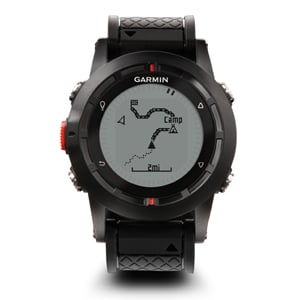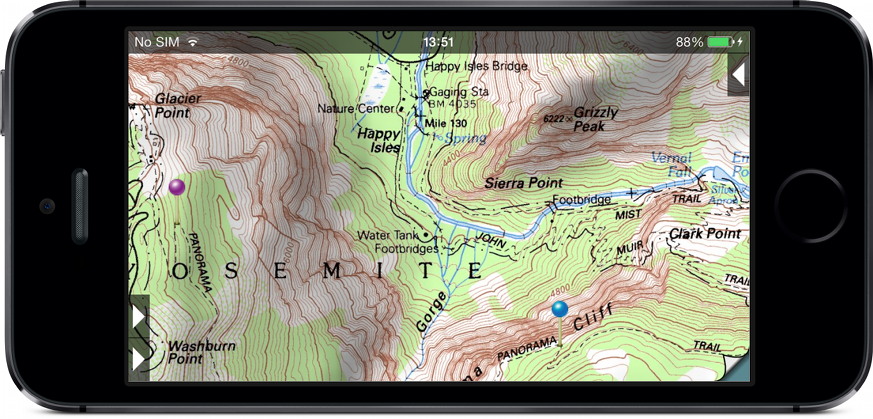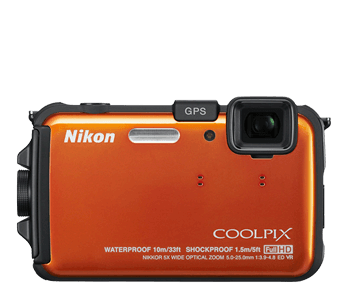Lightweight Kit of Backcountry Electronics
“Never trust anything that uses a battery,” is an old
backcountry mantra. Today, however, electronics are lighter, more useful and more
reliable. While electronics will never replace good judgment, experience and skill, their utility can’t be ignored.
Global Positioning Systems, headlamps, and both cellular and satellite phones can increase the safety and success of wilderness adventures. Coupled with advances in portable solar panels, rechargeable batteries, and the 5 Volt USB as a nearly universal power port, backcountry electronics have entered a new age.
There’s a lot
of expensive gizmos out there, however, and navigating through them can be overwhelming
and costly. Below I discuss what I’m currently using or considering getting. These choices are based on my own experiences, frustrations, successes and
failures in developing a functional and lightweight kit of electronics for the backcountry.
Global Positioning Systems (GPS)
As discussed in GPS
for Wilderness Navigation, Global Positioning Systems are useful aids when orienteering.
GPS’s are, however, battery hogs. Typically I get 20 hours out of a handheld
unit and 10 hours out of a GPS wristwatch. Recently I’ve been experimenting with the 2.5-ounce Garmin Forerunner 910XT ($450) wristwatch
GPS and eying the 3-ounce Garmin Fenix ($400). Previously, limited battery life and inability to recharge wristwatch
GPS units in the field had been a deal breaker. But with a Brunton Solaris 4 and/or Brunton Resync Power Pack I can now recharge them in the backcountry,
extending their battery life indefinitely.
The interface of a wristwatch GPS with my Apple Macbook Pro and
digital mapping programs continues to be problematic and manually entering
waypoints tedious. Hopefully, in the future these units will become more useful
for navigation by being compatible with Macs and programs like NationalGeographic Topo! Personally I’m more interested in my location than my
heart rate.
In the meantime I often use my dependable 3-ounce GarminForetrex 301 (Mac compatible) that’s powered by three AAA batteries. Rechargeable
AAA’s can be revived in the backcountry with the Resync or Solaris through the
USB compatible Brunton
Glacier 320 Headlamp that’s also powered by rechargeable AAAs. Carrying an
additional bulky AAA battery charger is unnecessary – I just recharge my headlamp
then swap the batteries out with my Foretrex GPS. The Foretrex is lightweight
(3-ounces) and relatively affordable ($150).
Headlamps
The bright and powerful Brunton
Glacier 320 Headlamp is powered by 3 rechargeable AAAs that can be revived with either a Resync Power Pack or solar panel.
The Resync has the needed USB adaptor for the Brunton Headlamp hidden in a back
compartment. At $180 the Glacier 320 Headlamp is not inexpensive (4-ounces)
compared to my $30 Petzl Zipka Headlamp (3-ounces). Yet the rechargeable Glacier can be utilized (as
previously discussed) to recharge AAA batteries for other devices.
Additionally, the Glacier with 150 Lumens is amazingly bright compared to my
Zipka, which produces only 17 Lumens.
Communications
Any iPhone
owner can testify to what amazing devices they are. Within a cell network
they can be a life-saving communications tool. Even when outside of a cell
network, the 4.5-ounce iPhone is capable of a multitude of handy applications
including photography, navigation, or simply remembering what day of the week
it is. Needless to say, iPhones can be charged from a USB power port. Prices start at $200.
photo by topomapsapp.com
Since the iPhone 3G, Apple has included a real GPS satellite receiver
that does not rely on triangulating only from cell towers. When outside of cell
networks power can be conserved by going to settings and activating “Airplane
Mode” that will stop the phone from uselessly searching for cells. Even better,
turn it off and enjoy being in the wilderness and “unplugged” until it’s
needed.
I don’t have my own Iridium Satellite Phone, but
often wish I did. Fortunately several of my friends and employers do. I’m hooked. When in the hinterlands I’ve
found Iridium a highly reliable two-way global commutations tool.
The 9-ounce Iridium
Extreme is dust, shock, and water-resistant. The Iridium Extreme can be recharged in the field through a
USB connection to either a solar panel or a Resync Power Pack. Hopefully in the
future the current $1,500 purchase prices will come down. Service rates vary
but typically service cost around $1 a minute.
For those who absolutely need to be online, check out the Iridium
Access Point, that combined with an Iridium Satellite Phone creates a hotspot
for an iPhone or other Wi-Fi compatible device. But be warned, the Access Point
transfers data at only 2.4 kbps, meaning data transfer is slow and therefore expensive.
The Iridium Access Point weights 6 ounces and costs $150.
SPOT recently introduced a 7-ounce satellite phone with
global coverage that costs only $500. Equally appealing are SPOT’s reasonable monthly service rates
that are as low as 25¢ a minute. The Global Phone can be charged in the field with
a Brunton Solaris 12 that has 12V cigarette power port. Unfortunately, the spot SPOT
Global Phone cannot be recharged with a USB cable. I have yet to use this phone
and am interested in hearing from anyone who has experience with it.
I have not carried a SPOT or similar
device but they are popular and worth consideration. The limiting factor for me
is the lack of two-way communication. In the event of an emergency or rescue I
believe two-way communication critical. I would rather invest (both weight and
dollars) in a satellite phone. The SPOT Messenger,
however, is lightweight (4-ounces) and affordable ($120). The SPOT Messenger
can send (but not receive) text messages, GPS coordinates, and/or an SOS. The Messenger
relies on three AAA batteries that cannot be recharged directly with a power pack or solar panel.
In recent years there’ve been many false alarms and abuses by
irresponsible individuals with one-way satellite transmitters. The resulting Search
and Rescues operations are expensive and often put others at risk. In a wilderness setting self-rescue,
when possible, is always preferable. Please use these devices wisely.
Water Purification
I have tried many water treatment methods including:
purifiers, pills, and iodine. They all seem to have limitations. Pills either
require a long waiting period, or like iodine, taste funny. Filters are heavy,
labor intensive, and often clog.
Recently on an expedition Mongolia I used a SteriPEN that harnesses ultraviolet (UV) light to purify water. I chose the SteriPEN Freedom, among other models, for its compactness, lightweight (less than 3-ounces) and ability to be recharged with a USB cable and the Brunton Resync. The standard USB adaptor that comes with the Resync is all that is needed. The SteriPEN Freedom cost around $120.
Recently on an expedition Mongolia I used a SteriPEN that harnesses ultraviolet (UV) light to purify water. I chose the SteriPEN Freedom, among other models, for its compactness, lightweight (less than 3-ounces) and ability to be recharged with a USB cable and the Brunton Resync. The standard USB adaptor that comes with the Resync is all that is needed. The SteriPEN Freedom cost around $120.
Treating a half littler of water with the Freedom SteriPEN takes less than a minute and there’s no funky flavor. The only concern is its effectiveness
for treating cold and icy water – an issue for any water treatment method.
Additionally, when traveling, the SteriPEN is invaluable for treating questionable
water in towns and cities.
Camera
For the last several years I've captured all my images
(both stills and video) with a Nikon
Coolpix AW 100. Not only does the camera shoot 1080 HD video and high-resolution
16-megapixel photos, the AW100 is water, dust, shock, and freeze proof. It also contains a built in GPS for
geo-referencing images and a 5X optical zoom lens. The Coolpix AW 100 weighs
6.5 ounces and costs $300.
Unfortunately, the AW100’s battery cannot be charged
directly with a USB cable – the battery needs to be removed and
placed in a separate charger. Fortunately, the $25 after-market Gomadic
Portable External Battery Charger for the AW 100 that weighs only 4 ounces includes
a USB power cable.
Regardless of recharging capabilities, I always carry
several fully charged spare
camera batteries as well as a spare 32GB SD Card.
Tablets
When waiting out bad weather nothing is better then a good book
–
with my 6-ounce Kindle I have
680 of them. The Kindle is easy to read and can be easily recharged with the
Resync. Like my Freedom SteriPEN, the stock USB adaptor that comes with the Brunton
Resync Power Pack makes it easy to recharge. One charge can provide a month’s worth of
reading.
The new iPad
Mini weighs only 11 ounces and is handy for surfing the net and catching up
on email. My wife and I carried an iPad when skiing the Haute
Route where Wi-Fi is available at many of the huts. All iPads come stock
with USB power cables.
Power
Power Pack
On backcountry trips lasting 3 to 7 days I bring a Brunton Resync Power Pack.
Encased in a rugged water resistant shell the power pack carries enough juice
to recharge all my USB compatible devices. The 10-ounce power pack costs $168
and can be charged with either a 5 volt USB (using a solar panel or a standard
wall outlet and a USB adaptor) or 12 volt DC (using a solar panel or vehicle
power port with a USB adaptor).
Solar Panels
On expeditions or extended backcountry excursions lasting a
week or more I pack a Brunton Solar Panel. The 6-ounce
SOLARIS 4 is compact, comes with a USB power port, and costs $260. During the
day I use the solar panel to charge a power pack. I often strap the solar
panel on the outside of my backpack and run the wire to my Reysnc Power Pack
that’s stored safely inside the pack.
On expeditions involving more electronics and greater power needs I use the 11-ounce Brunton Solaris 12 ($432) or the even larger 28-ounce Solaris 26 ($655). Both come with a 12 V Cigarette Power Port that can power devices like the SPOT Global Phone. For USB compatible devices a USB adaptor is required.
On expeditions involving more electronics and greater power needs I use the 11-ounce Brunton Solaris 12 ($432) or the even larger 28-ounce Solaris 26 ($655). Both come with a 12 V Cigarette Power Port that can power devices like the SPOT Global Phone. For USB compatible devices a USB adaptor is required.
Adaptors
When charging devices from a vehicle or a 12 V solar panel (such as the Solaris 12 or 26) an adaptor that converts 12 V Cigarette power ports to 5
V USB is needed. Some of these adaptors cost as little as a $1.90.
For recharging USB compatible devices from a standard 120 V
wall outlet a simple wall adaptor is required. Some are as inexpensive as $6.99.
When traveling internationally a variety of wall outlets can
be encountered and quiver of adaptors is required for recharging USB
compatible devices. One simple solution is the $30 Travel
Smart All-in-One Adaptor that has a USB port.
Weekend Warrior
This 1.3-pound kit is typical of what I use when on
backcountry adventures lasting less than 3 days such as hiking Buckskin
Gulch or packrafting the Jarbidge-Bruneau.
Total ounces 21.0
Extended Backcountry
This 2.5-pound kit is suited for slightly longer trips including
packrafting in the Bob
Marshall Wilderness or skiing across Absaroka
Mountain Range.
Expedition
For extended adventures into remote places like Antarctica
or Mongolia
I typically carry the following 3.3-pound kit.
Total ounces 53.0























Superb wrap-up, Forrest!
ReplyDeleteIt's great news that the new Iriduium 9575 can be charged via USB. Makes things a lot easier! Also the Brunton headlamp with battery chanrging option is very interesting.
I'm little skeptic with the SPOT Messenger (which by the way usses 3 x AAA, not 2 x AA) and their new sat phone. They're cheap but the price is the Globalstar network that doesn't offer coverage as good as Iridium (expecially on high latitudes). That said, Yellowbrick satellite messenger (http://www.yellowbrick-tracking.com/) is worth checking: cheaper than satphone but still on Iridium network, built-in battery with USB charging and best of all: it offers two-way communication (over text). It also shows your current coordinates on the display. Works very well in my experience. More expensive than SPOT but you get what you pay for.
Thanks for information on the SPOT. I corrected the battery information. I will check out the Yellowbrick.
DeleteNo problem. Guess the AAA batteries would make sense in your system: same batteries in headlamp and GPS as well. I'm trying to go all AA so little problematic for me.
DeletePS. Some rugged Olympus cameras charge directly from USB but I haven't been too happy with the quality of the photos.
AAA batteries can be converted to AA with a simple and inexpensive adaptor - http://www.miniinthebox.com/aa-to-aaa-battery-adapter_p505332.html
DeleteCheck out the Delorme inReach. 2 way satellite texting through Iridium sats. It worked well for us in Patagonia.
ReplyDeleteThis blog is really informative. Best Lightweight solar panel supplier offers high quality portable mobile solar panels, power banks and portable solar generators for everyday use.
ReplyDeletesolar panel charge phone